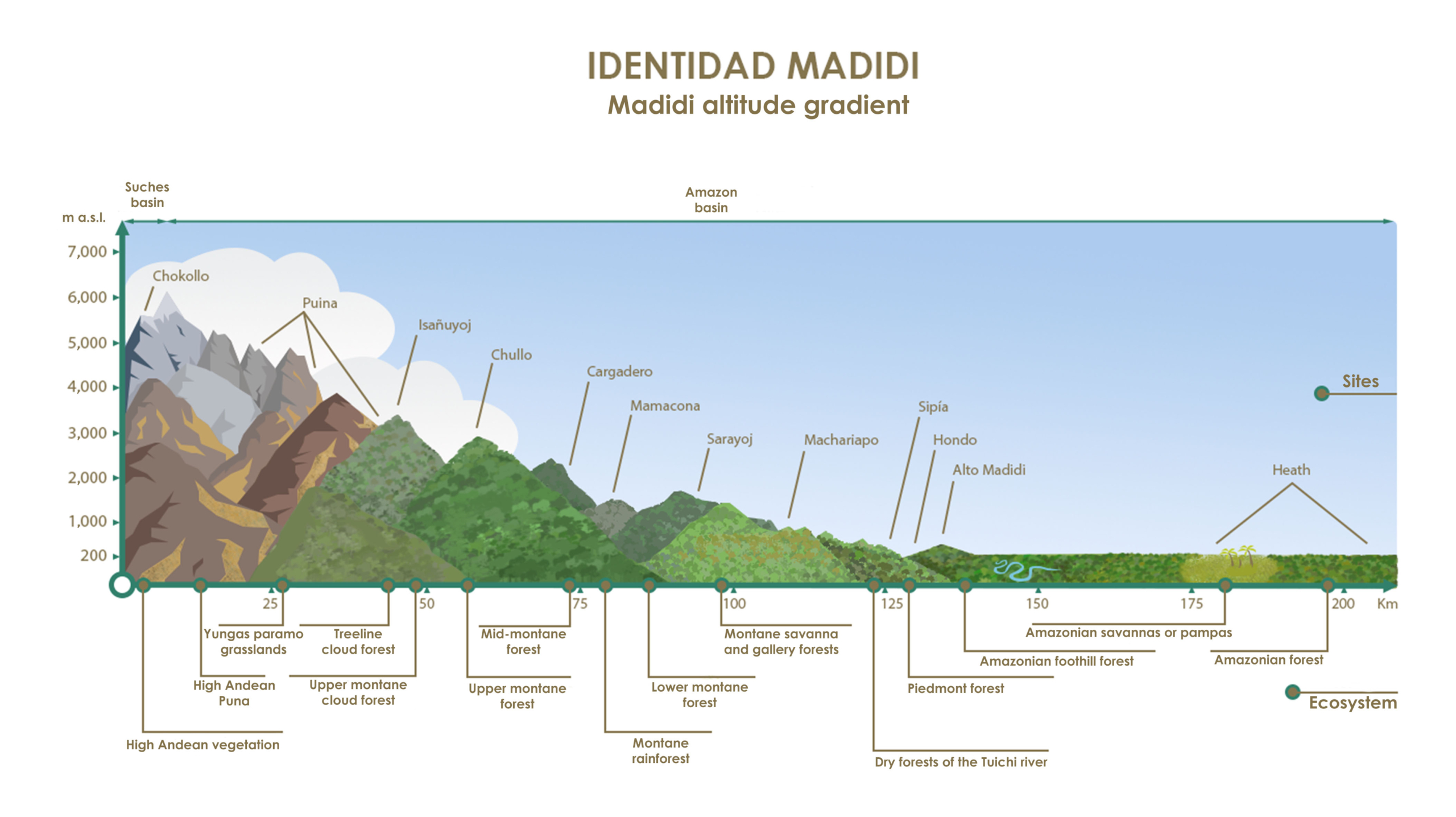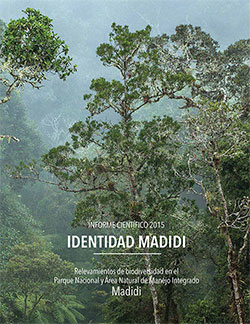Sipía and Suyo Suyo
Dry forests of the Tuichi river (Sipía and Suyo Suyo, 2015)
Dry forests of the Tuichi river The second study site of the expedition was conducted between June 22nd and July 5th, 2015, in the dry forests of the Tuichi River. The camp was established on the banks of the Machariapo river, at 740 m a.s.l., between the communities of Sipia and Suyo Suyo. These forests contain a greater diversity of species as compared to other dry Andean forests in the Tropical Andes, as well as a great variety of endemic species. The dry forest is isolated because it is surrounded by montane forests and humid piedmont forests. Its flora is similar to that of the Chiquitano forests, the piedmont forests of the Tucumán-Bolivian region and the inter-Andean dry forests of Bolivia and Argentina, with characteristic species such as bromeliads, cacti and palms. In total, 162 species of plants, 130 species and subspecies of diurnal butterflies and 265 species of vertebrates were recorded, of which 68 are new species for Madidi, 26 for Bolivia and 7 possible new records for science.
[envira-gallery id=»1939″]
| Title | Categories | Update Date | Download |
|---|---|---|---|
|
Scientific Report 2015 1 548 downloads |
Reports | March 30th, 2021 | Download |
|
Scientific Report 2017 1 375 downloads |
Reports | September 1st, 2021 | Download |
|
Scientific Report 2016 1 333 downloads |
Reports | September 1st, 2021 | Download |
[envira-gallery id=»805″]
[envira-gallery id=»806″]
[envira-gallery id=»826″]




 Facebook
Facebook Instagram
Instagram YouTube
YouTube